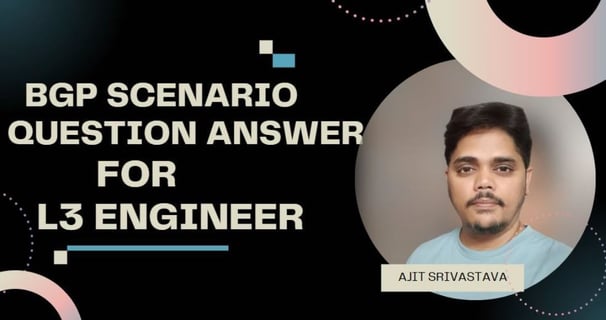SALE ON PDF
Understanding BGP: Scenario-Based Questions and Answers for All Experience Levels
1/15/20252 min read
Introduction to BGP
Border Gateway Protocol (BGP) is a crucial component of the internet's infrastructure, enabling the exchange of routing information between autonomous systems (AS). Whether you're new to BGP or have extensive experience, grasping the nuances of real-world scenarios can significantly enhance your understanding of this protocol. In this blog post, we will explore various BGP scenario-based questions and provide insightful answers to help clarify common concepts and challenges.
Common BGP Scenarios and Solutions
One common scenario faced by BGP network engineers is adjusting the path selection process. Let's say you have multiple links to a single provider and you want BGP to prefer one link over the others due to its lower latency. You might consider using BGP attributes such as local preference and AS path prepending. By setting a higher local preference for the desired link, BGP will prefer that path for outbound traffic, effectively influencing the routing decision.
Another scenario involves troubleshooting a BGP session that has gone down. A network engineer might encounter an issue where a BGP neighbor relationship fails to establish. The first step would typically involve checking the configuration parameters—such as IP addresses, autonomous system numbers, and BGP timers. Ensuring both sides of the BGP session have matching configurations is essential for a successful connection. Additionally, reviewing logs can provide further insights into the problem, enabling you to pinpoint the root cause efficiently.
Advanced BGP Features and Their Applications
For those with a more extensive background in BGP, there are several advanced features worth exploring. For instance, BGP communities play a pivotal role in influencing routing policies. By tagging routes with specific community values, you can inform upstream providers how you want them to handle your routes—whether to propagate them widely or apply certain policies. Understanding how to implement and manage communities can enhance traffic flow and optimize performance across your network.
Moreover, the implementation of BGP route reflectors can simplify the BGP topology in larger networks. Instead of a full mesh between all BGP peers, route reflectors allow certain routers to disseminate routing information, drastically reducing the complexity of configuration. This is particularly beneficial in Service Provider environments, where scalability is essential.
Conclusion
Regardless of your experience level, recognizing and addressing various BGP scenarios is vital for anyone working in network management. The ability to troubleshoot, configure, and optimize BGP effectively requires a deep understanding of the protocol's mechanisms and options. As you encounter these situations in your professional journey, remember that practical experience, coupled with scenario-based learning, is key to mastering BGP. Buy the BGP Scenario based question PDF if you are looking for Most Asked interview question on BGP Scenario and boost your confidence.
Most Asked question on BGP during interview depend on which career level you are applying for. Any how some questions are like-
What is BGP ?
What are BGP attributes ? Explain mandatory and optional attibutes ?
How to influence BGP incoming and outgoing traffic ?
How to use BGP route map ?
How to filter routes in BGP ?
How to influence Load balancing and load sharing in BGP
So above questions are few and if you are looking for concrete questions and their best answers order PDF NOW.

